Are you a Quiet Speculation member?
If not, now is a perfect time to join up! Our powerful tools, breaking-news analysis, and exclusive Discord channel will make sure you stay up to date and ahead of the curve.
I first got into Magic around Ice Age, but I was lucky enough to have an uncle who bought a bunch of Revised and Legends cards and then never learned to play the game. I was the fortunate recipient of this windfall, which included five dual lands and a Mana Drain.
Of course, I didn't give a crap about those cards. What I really cared about were sweet fatties like Sengir Vampire and Scaled Wurm. Most of all, I liked Serra Angel. Here's something that I should either be too ashamed to admit or gives me a ton of nerd cred (you decide): I had the art for Serra Angel put on my retainer when I was eleven or twelve.
That Mana Drain? I thought it was awful. Mana burn was a thing back then, and I was a typical bad player, too afraid to use my life total as a resource (I also thought Swords to Plowshares was bad because it gave the opponent life. Sigh). I never played with that Mana Drain, not even once, and I have legitimately no idea where it ended up.
As for the duals: I sold them to a neighborhood kid for $20 each, which seemed like so much money at the time. I believe I spent the proceeeds on Ice Age Starter Packs, which is just horrendous by every metric. I kept playing through Urza's Saga block, and had a nice little collection of mid-value cards by the time I hit high school and lost interest in Magic.
What I wish I could say I did at this point was stash the rest of my cards away, only to dig them out more than a decade later when I got back into the game. What actually happened is that I decided to sell them, but unfortunately, my outs at that time consisted of a bunch of high school kids.
In general, high school kids don't have a ton of money, and after a failed attempt to trade all my cards for a Nintendo 64 (I was thwarted by my trade partner's parents, dammit), I ultimately ended up piecing out the collection bit by bit for far less than I should have accepted. The only cards I kept were for an awful green deck that I never actually played but held onto just to have at least a few Magic cards around. Those cards sat rubberbanded in my desk drawer until I left for college.
Regrets (and Lessons about Standard)
Yeah, I regret my short-term outlook at that time, but I was young and dumb, and I try not to dwell on stupid stuff I did when doing stupid stuff is the expected behavior. What I can do now, however, is learn from the mistakes I made and not repeat them.
First and foremost: I was way too interested in Standard (Type 2?) junk in those days. Remember how I said I built a nice little collection of mid-value cards? We're talking stuff like Tradewind Riders, Palinchrons, Serra Avatars, and Time Warps. These were cards that were super exciting for their time, but ultimately were passing fads with little impact on today's Magic outside of casual formats.
Here's my first lesson: don't build a collection of Standard cards. This is especially true if you're the type of player that doesn't get out to too many events. From my perspective, Standard is for grinders.
The money investment in collecting Standard cards will never be worth it from a purely financial perspective, unless you're winning store credit at FNM every week and spiking the occasional IQ or GPT. If you can win a bunch of store credit, travel awards, and/or cards playing Standard, then buylist your deck for a decent fraction of what you bought it for, the format can absolutely add value to your collection.
But if you don't fit in this camp, I would strongly, strongly advise you to keep away from Standard. In fact, if you're playing mostly casual formats, I think exercising patience by not buying Standard staples until after rotation is a very reasonable strategy to ensure you don't pay more than you should for your cards. (It is also perfectly reasonable to pay a higher price to play with a card you love sooner.)
Competitive Formats and Lasting Value
Nowadays, I always view Magic collecting through the lens of how a collection will look in the future. I want to have cards available that will still be powerful five, ten, even twenty years from now, and not a bunch of Standard nonsense that has been long-outclassed and forgotten.
Competitive eternal formats are a good place to start. If you think your future with Magic will most likely involve attending large, competitive tournaments, then working toward a Vintage or Legacy deck is a great place to store value. Yes, occasionally decks fall out of vogue or get banned out of the format, but staples like duals, fetches, Force of Wills, and the like will always be useful. If you're ready to take the step to picking up Power, building Vintage decks should be relatively easy for you in the future.
Modern is a different story. Trying to build up a large Modern collection is asking for trouble when you consider bannings, Modern Masters sets being released on a regular basis, and high-profile Standard reprints coming a few times a year. I wrote here about how I'm torn regarding how to handle a personal collection for the format (MTG finance is so much easier when you don't bring "personal collections" into the deal). I have a few more thoughts on the subject.
My first instinct is just to have all the lands in the format. That's certainly not a novel approach, but unless the DCI finally listens to the pleas of certain outspoken pros, the fetch-into-shock mana bases of Modern are likely here to stay.
Here's my concern, though: every major land reprinting in the last few years has come in Standard-legal sets. We saw the shocklands in Return to Ravnica and Gatecrash, then got another immediate reprint in Dragon's Maze. The same thing happened with the fetchlands in Khans of Tarkir, with an immediate reprint in Fate Reforged.
On the other hand, Modern Masters didn't have any major land cycles—it appears the design team just didn't have the space. Basically, lands important to Modern have been printed in sets that will most likely drag down prices. If this trend continues, even lands may not be safe long-term holds.
I'm still unsure about Modern as a place for parking long-term value, so I'll be keeping a very close eye on Modern Masters 2015. The reprints in that set—and even more importantly, the print run—will be a huge indicator for how to approach Modern moving forward. Keep your ears to the ground, folks.
Casual Benefits
Casual formats are great for storing long-term value, because unlike tournament decks, casual collections rarely become unplayable due to metagame changes or bannings. This is especially true because the most popular casual formats, Commander and Cube, are singleton, so any one card getting banned generally does not delegitimize an entire deck or strategy.
What's also great about these formats is that you can put exactly as much money and effort into them as you'd like. If you just want to play giant monsters but not worry about monetarily expensive cards, that's fine. If you want to build a perfect mana base with fetch and shocklands, that's cool, too.
Want to go to the extra mile and pick up duals? You're allowed. Want to foil out your deck or cube? That's a big undertaking, but it will be a lot of fun. And, of course, powered cubes are taking the ultimate step in storing value in a casual collection.
Tiny Leaders, the new format everyone is talking about, is great for this type of thing, too. With so many similarities to Legacy, Tiny Leaders is a great way for one to take a step deeper into locking in value in one's Magic cards. I currently own zero dual lands, and given how expensive they are and how far I am from building a Legacy deck, I didn't really have any plans to acquire any.
But this Tiny Leaders format looks cool, and it seems to be catching on in my community, with a few tournaments already firing. As a Spikey player, I like to play optimized decks, so if I get involved (and if I do, it will almost certainly be with this guy), I will certainly be picking up the three duals to make the manabase perfect.
That's a first step into Legacy, my friends, and I think a lot of people will see it this way, too. If Tiny Leaders catches on like Commander did, I would expect Legacy staples to climb even higher, both due to demand from the format and the format being a great jumping-off point to get into Legacy.
Build Something to Be Proud Of
So as you buy and sell and trade and play Magic, try to keep in mind the value of building something of lasting value. Acquiring a bunch of crap for Standard that rotates and loses all value doesn't do it. Haphazardly acquiring Modern staples is better, but is looking riskier all the time between bannings and reprintings. What really will help you enjoy your cards most and lock in value is focusing on eternal staples, either competitive or casual (or both), that will be fun to play today but also ten or twenty years from now.
If you do it right, the next time you take a break from Magic (and we all do occasionally), you'll have two solid choices: 1) Sit on the awesome cards you've collected in anticipation of your inevitable return; 2) Cash out and enjoy a major purchase with all the value you stored while playing MTG. Both of these options seem pretty good—don't you agree?


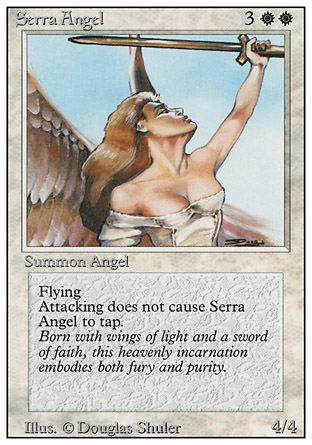
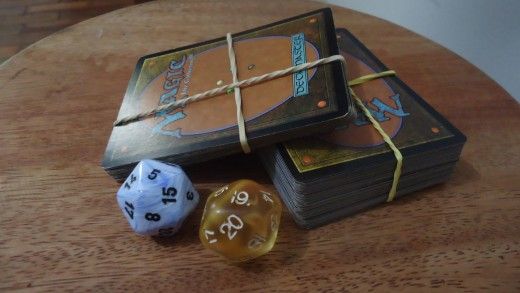
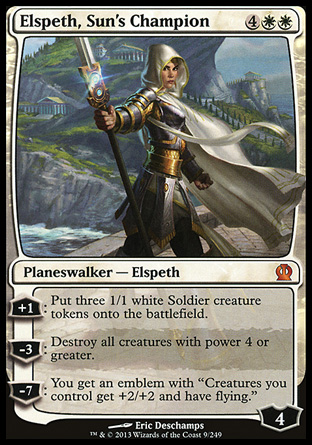
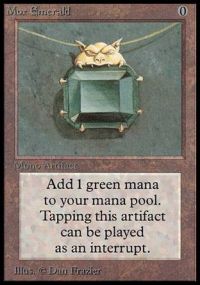
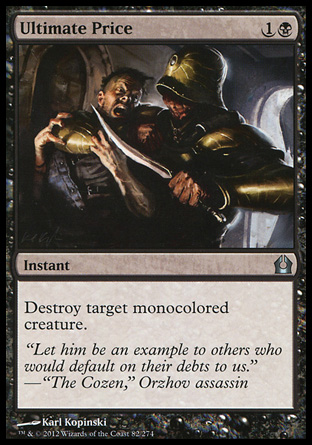



I agree with most of what you said, for Standard I just open 1-2 boxes of the new set and otherwise I just wait for the cards to drop down to a price I’m comfortable with, usually that happens after rotation. I will however pick up lands like Shocks and now Fetches to trade into bulk rares as that seems to work pretty well and leads to very interesting profits. I do pick out whatever I like that I get in bulk and I do eventually try to own a playset of just about anything I like in a set (which is often 80-90%). I keep a decent basis for Modern mostly because many cards are also nice to have for other formats (casual and otherwise).
I think there’s a good chance that Wizards will at some point slow down a little on the flashy land reprints, even if just because they are going to be running out of them. Now that they have done Shocks and Fetches they pretty much have Filters and Man-Lands left and then what? I don’t see them keep up reprinting new lands every 2 blocks and when they reprint the same again and again it becomes less and less interesting to players. I would thus expect land reprints to slow down eventually.
From what I’ve read Tiny Leaders attracts a player very different from Commander (as you already implied, a more Spikey player). To me, as a strictly casual player, it does not really feel like a casual format, but more like a non-sanctioned competitive format. I would thus not expect it to catch on like Commander (which incidentally took quite a long time: it’s based on a ’96 Duelist article). I would instead compare it to something like Peasant or the French 1:1 Commander (admittedly due to all the press it’s getting I would expect it to do a bit better than those). When I read about a few decks being too strong I wonder if after the hype the format really has what it takes to become the go to format for non-sanctioned competitive play like Commander has pretty much became the go to format for casual play. I doubt it, though I certainly recognize that there would be money to be made in the mean time and I am wondering if I should maybe create a deck for it just in case.
I sold out of Standard shortly after rotation. I traded it all in for credit at an SCG Open, picking up nearly $1K worth of dual lands (or 6 cards). It felt bad not having a Standard deck at first, but I just don’t have the time to keep up with it now that I have a baby to take care of.
Fast forward to now, I feel great. My Standard cards would have been worth less half of what they were then, while my duals are steadily climbing.